Hidden Talent: The Emergence of Hollywood Agents
In this first-ever history of Hollywood agents, Tom Kemper mines agency archives to present an insider's view of their tooth-and-claw rise to power during the studio era Through case studies of key figures like Myron Selznick and Charles Feldman, we see that the agent's character and social relationships functioned within a business structure -- a good reputation and powerful connections were an agent's most precious assets.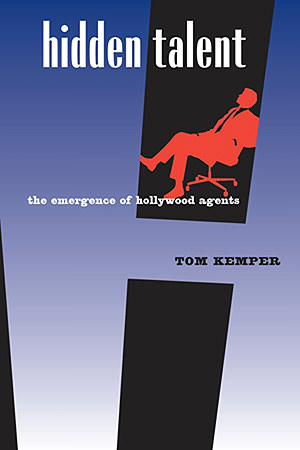
Editor’s note: The excerpt from Kemper’s book, “Hidden Talent: The Emergence of Hollywood Agents,” begins after a brief introduction by the author below. The excerpt is from Chapter 9, “Tall in the Saddle: Agents in the Producer’s Chair.”
I began this project as an inquiry into the general role of the agent, a topic that hadn’t really received serious analysis. Like many film fans (and historians and journalists), I assumed that agents really only became important Hollywood players in the 1950s with Lew Wasserman and then surged in the 1970s with big brokers like Mike Ovitz, the rise of CAA and ICM, and right on up to Endeavor’s Ari Emanuel (aka Ari Gold). When I dug around in various historical sources and archives to see what agents were doing in the 1930s, the classic Hollywood studio era, I thought this material might serve as the preface to the book. What I found completely surprised me: Agents were there at the start of the studio system and played a crucial role to its functioning as a big business. These discoveries became the entire book.
Certainly, the studios (and even the Academy of Motion Picture Arts and Sciences) resisted the role of agents. I document those battles in the book. But major agents like Myron Selznick, Leland Hayward and Charles Feldman established tremendously successful agencies (their salaries surpassed those of many studio execs), while managing huge talent like Jimmy Stewart, Fred Astaire, Carole Lombard, Irene Dunne, Alfred Hitchcock and others. I was equally surprised by how these agents gained their clients’ percentage points on film profits, independently packaged clients for productions, and gained limited contracts with powerful clauses (script approval, star approval, final cut, and such) for their clients — all conditions we associate with the modern era of Hollywood. On Turner Classic Movies and in many historical books we hear about the iron-clad contracts of the studio era. So I was surprised not only to discover the incredible role played by agents in this era, but also by the many exceptions to these contracts and the degrees of autonomy held by so many great Hollywood artists. Claudette Colbert made “It Happened One Night” thanks in part to her agent’s work on contracts. Howard Hawks produced probably his best work when he signed up with a new agent.
The excerpt below gives some indication of the success and struggles of clients and their agents. It deals with the early 1940s as some changes were under way in Hollywood, thanks in part to agents like Charles Feldman, whose own charisma, I have to admit, worked on me even through the archival papers.
Hidden Talent: The Emergence of Hollywood Agents
By Tom Kemper
University of California Press, 312 pages
* * *
Charles Feldman fashioned a distinctive character for the role of the 1930s Hollywood agent. Dapper, gregarious, and All-Pro, Feldman sported an expansive demeanor, both in his business dealings and his social engagements in the world of Hollywood; his manner served him well. For if agents aid in the commercial fabrication of individuality, honing their clients into distinctive commodities, then agents also fashion their own sense of personality or character as a way of selling themselves. Agents represent a modern phenomenon not only in the sense that they spring from our era’s complex integration of culture and industry—and this tension circulates throughout the agent’s discipline, balancing the artistic needs of clients with those of business—but also in the sense that agents exemplify the modern practice of marketing personality, of selling one’s self. In this regard, Feldman showed a profound interest in developing identities for his clients, tending to and even tailoring their unique talents and their own self-fashioning, whether by molding new roles for them, doting on their individual performances, stitching screenplays to embroider their particular skills, tactically weaving them into packages with other clients, or by generating proper recognition and attention for their roles in title sequences and advertising. To accomplish these goals, Feldman constructed his own distinguished persona within the industry: gentlemanly, charming, and learned. Friends called him “Gable” for his rakish resemblance to the star. In all of his endeavors, Feldman played the courtly diplomat. Even at his most aggressive, a stance he did not shy from, Feldman took a dialectical approach to negotiations, hearing out the opposing side, while developing persuasive compromises or pinpointing holes in their positions that worked to the advantage of his clients.
Over one hundred talent agencies operated in Hollywood at this time, so Feldman certainly had rivals, even with his stellar client list, which included Claudette Colbert, Michael Curtiz, Irene Dunne, and Warner Baxter, and other major box office attractions. Myron Selznick led the pack, along with his partner Leland Hayward. They managed the careers of Carole Lombard, Henry Fonda, William Powell, Leo McCarey, and many others. Feldman’s career stands out for the strong creative advice he gave his clients and the dual role he played when he set up his own production company in the early 1940s. Throughout the 1930s and 1940s, Feldman carved out new deal strategies and paradigms that set competitive milestones for other agents. From the start, Feldman promoted a limited notion of freelancing through juggling nonexclusive contracts, signing clients to short contracts—two-film deals or two to three year studio terms—that allowed them to work at other studios simultaneously. No doubt harnessing his legal training, Feldman proved a probing reader of contracts and a nuanced writer of inventive provisions. This agent understood that contracts represented a process and a dialogue, not a final step, providing a platform for all parties to parse out terms and conditions favorable to both sides. In Feldman’s hands, contracts became both more flexible and more rigorous, depending on his goals and the interests of his clients. In a business dependent on a complex network of contracts—between talent and studios, exhibitors and distributors—Feldman’s career presents an alternative perspective on the so-called golden age of Hollywood, illustrating the numerous exceptions to this era’s alleged adherence to the ironclad option contract. To illustrate this point, take two of Feldman’s clients—John Wayne and Marlene Dietrich—as examples of the strong collaborative role he played in their careers and creative activities. Feldman’s actions—consulting and advising clients, managing their selection of projects, and even collaborating with them on productions—demonstrate some of the flexibility of the studio system. In this regard, managerial decisions extended beyond the studio walls and the moguls and could include figures like agents. Saddling John Wayne: Dietrich Rides Again
In his later years, John Wayne feigned complete bafflement when he claimed that after all of his time in the film business, he still didn’t know what an agent did. But Wayne knew all too well, for his relationship with Feldman spanned the richest period in the actor’s career, lasting well into the 1960s and ripe with correspondence, consultations, conflicts, and consolations—no passing affair but a long-term meaningful relationship. Of course, admitting to a dependency on handlers like agents amounts to acknowledging a certain lack of independence, a chink in the armor of machismo Wayne wore with such confidence. Feldman played a strong role in navigating Wayne’s access to stronger, richer material; in partnering the actor with creative personnel to accentuate and buttress his skills; and in gaining the actor industry attention and a degree of autonomy as his career developed. Acquiring Wayne in the late 1930s represented yet another one of Feldman’s acts of thievery, so transparently that he wound up in courts over the infidelity. But Wayne’s career strategy in the early 1940s typified Feldman’s strategies in the synergy between his production company and his talent agency.
Marlene Dietrich, another one of Feldman’s recent acquisitions, lured the young cowboy-actor into Feldman’s stable—at least, according to Sam Morrison, Wayne’s cuckolded agent at the time. In papers he filed with the Los Angeles Superior Court in October 1941, Morrison claimed that Dietrich had used “undue influence to weaken and undermine the mental capacity” of Wayne, leading the actor to abandon Morrison and flee to Feldman, while under the spell of Dietrich, Feldman’s client and alleged emissary in this illicit enterprise. Morrison had lithely managed the young actor’s career throughout the 1930s, as Wayne drifted in and out of minor roles in studio films and major roles in minor films. Tellingly, one mid-1930s article on agents mentions Morrison’s office and passingly refers to a young actor John Wayne waiting impatiently to see his agent. When Wayne landed in Ford’s “Stagecoach”—produced by Feldman’s good friend Walter Wanger—his ambition, very likely, began to outweigh his patience with his agent. But this discrepancy only found expression, however, when Wayne encountered another species of his acting breed who had recently revamped her career by switching her representation to Feldman: Marlene Dietrich. This adulterous agency tale, like any good melodrama, requires some backstory.
Hidden Talent: The Emergence of Hollywood Agents
By Tom Kemper
University of California Press, 312 pages
Feldman roped Dietrich as a client in 1938, long after her reign as a genuine star in films such as “The Blue Angel,” “The Scarlet Empress,” and “Shanghai Express,” even while some of these films met with decidedly mixed commercial and critical responses. By the decade’s end—and possibly the end of a career—Dietrich’s allure melted into “box office poison,” according to exhibitors, who placed a full-page ad declaring so in 1937, her temptation-tangled delivery grown tired and campy—particularly in a period dominated by earthy, vernacular actresses like Feldman’s own Claudette Colbert and Irene Dunne.
Dietrich entered Feldman’s orbit through one of the many innovative production set-ups the agent Feldman explored in the late 1930s. In 1938, Feldman had entered into discussions with Universal’s Joe Pasternak about a potential production partnership, wherein the producer, Feldman, Feldman’s associate Ralph Blum, and Henry Koster would form “a great “United Artists’ type of set-up.” While this grand design never materialized, Feldman became a regular provider of talent to Pasternak’s Universal productions. Both Pasternak and Feldman recognized the potential for Marlene Dietrich to return to the screen. Feldman felt that her films needed to balance out Dietrich’s exoticism by regularizing her material, by replacing, for example, the phony veils and European lighting that surrounded her earlier image with robust American settings, genres, and characters. Feldman’s pitch, ever alert to the ways in which stars represent constructions—that is, objects shaped by the screenplay, the co-stars, the production quality of films—as much as real figures (real personalities, looks, and talent), convinced the cautious actress. Selling Dietrich on this game-plan, Feldman sold her on his agency as well. He immediately set her up in Pasternak’s “Destry Rides Again,” a comedic but rugged little western. Cast as a saucy French salon owner and free of European silky cobwebs, the film surrounded Dietrich with a spirit of the frontier, and an American love interest in Jimmy Stewart. Off her pedestal, Dietrich proved equally sure-footed in the pioneer’s dust.
Feldman repeated this formula in her follow-up film, “Seven Sinners” (1940), with the pioneer spirit transformed into a no less solidly American Navy drama. In fact, Feldman developed the screenplay through his production division and with his screenwriter clients. With Jimmy Stewart tied up in another production, Feldman naturally turned to one of his own clients, Tyrone Power. Feldman had purchased Power’s contract in 1938 for $30,000 from agent Ruth Collier (Dana Andrews came over from Collier as well in another deal); Power refused the role and went off to make a series of films for Feldman pal Darryl Zanuck at Fox. Feldman then turned to another “client,” John Wayne, now consulting with Feldman, but still contractually tied to Morrison.
Having performed this little combination on “Seven Sinners,” Feldman next paired Dietrich and Wayne in two more of his screenplay properties, “The Spoilers” and “Pittsburgh,” both in 1942. Feldman’s emphasis on controlling one’s career by independently selecting projects impressed both Dietrich and Wayne. It pushed Wayne to work on his persona more actively—his notorious gait, his delayed delivery, his pose—an attentive tailoring and self-consciousness encouraged by Dietrich during their short relationship on (and off) the set of the Feldman productions. To Wayne, Dietrich represented an example of a performer calculating the careful construction of a consistent and coherent screen persona and always retaining a strong say in her career, even when she followed Feldman’s advice. Hitherto an actor who stumbled through roles as they came to him, Wayne recognized the importance of building a persona by selecting roles carefully and establishing a certain continuity to his characterizations, even as the roles shifted in different films. One couldn’t rely entirely on agents—Wayne understood that much through his frustrations with Morrison—even those as responsive and committed as Feldman; actors needed to show a commitment to their career. Thus, Wayne took a greater interest in the development of scripts and the overall production process. At the core of this new approach, Feldman aided and abetted Wayne in this direction. Feldman played a strong role in shaping these films as a producer and his role as agent to these stars here merged indistinguishably from his role as a producer. For example, on “Pittsburgh,” Feldman scrutinized the film editor’s various versions with keen attention to the treatment of his star-clients. In demanding new cuts and re-shoots, Feldman added numerous close-ups of his stars. “See that the cameraman is instructed to really make a gorgeous shot of” Dietrich’s entrance, Feldman dictated in notes for a re-shoot:
We have rewritten and are rewriting further the scene (which is a retake) in the early part of the picture, where Wayne comes in to Dietrich and she is in a sort of negligee. … We hope to change this scene so that it will be a very, very important emotional scene for her, so that at the finish of the scene there will be a complete capitulation on her part, and the audience will unqualifiedly know that she is desperately in love with Wayne.
Of course, Feldman’s shaping of the film completely paralleled his reshaping of Dietrich’s persona, calculating audience sympathy for the character. This kind of vulnerability, the exposure of weakness, worked against, if not erased, the calculating, hypnotic and powerful roles Dietrich played in her early films. Collapsing in emotional vulnerability solicited audience sympathy for the actress, especially in the consistent way Feldman had shaped these roles for Dietrich.
Hidden Talent: The Emergence of Hollywood Agents
By Tom Kemper
University of California Press, 312 pages
The resurrection of Dietrich’s star persona in these films rubbed off on Feldman’s other client, John Wayne, doubling the service value (to the agency and its clients: Randolph Scott, their co-star, was also an agency client) of these productions. In the publicity material for these films—Feldman hired the publicist with Universal footing the bill—Feldman consistently emphasized Wayne’s association with John Ford and kept the focus on his recent films, especially the critical and commercial success of “Stagecoach,” even if Randolph Scott, the other Feldman client sharing the bill with Dietrich and Wayne in these offerings, garnered slightly more attention. Still, in a memo to Universal’s marketing director, Feldman advised the studio to play up Dietrich and Wayne in the advertising (did Feldman act here as the film’s producer or as his client’s agent?). Dietrich’s “new wave of popularity” received equal emphasis. Amongst the mainly favorable reviews, all of which treated the films as modest but successful entertainment vehicles, the Hollywood Reporter noted of “The Spoilers” that its “apt casting is a tribute to the Charles K. Feldman group plan.” To capitalize on such industry attention, Feldman took out ads emphasizing the agency’s clients in these productions.
Wayne consulted with Feldman as soon as he met the agent on “Seven Sinners.” Given Feldman’s close relationship with Walter Wagner, the producer of Wayne’s 1939 film “Stagecoach,” Feldman and Wayne may have crossed paths even earlier. However, Morrison still retained an agency contract on Wayne at that time. “Stagecoach” seemed to catch Morrison by surprise; the agent’s surviving scrapbook, while spilling over with articles and pictures of lesser clients, only showed evidence of his relationship with Wayne during the year of “Stagecoach,” when suddenly page after page featured clippings, reviews, and advertising featuring his client, including “Seven Sinners;” then Wayne disappeared from Morrison’s book.
In 1932, Wayne had signed a five-year contract with Morrison and renewed his contract in 1936 for another five years, commencing June 4th, 1937. Under Morrison’s stewardship, Wayne signed a contract with B-movie studio Republic, a standard document giving Wayne $3000 per picture through 1943. But 1939’s “Stagecoach” changed the picture. The success of this film and Wayne’s starring role in the production fueled Wayne’s dissatisfaction with his career and his agent. When Wayne moved on to Wanger’s friend Feldman’s productions he became increasingly unhappy that Morrison failed to exploint the actor’s new success. Wayne stopped paying commissions to Morrison on July 31, 1941. Feldman’s internal office memos reveal that Feldman was already looking for new roles for Wayne and for ways to restructure his Republic contract. As Wayne explained to SAG in October 1941, for years he had been dissatisfied with Morrison. This relationship, Wayne complained, was “so unsatisfactory to me that I was compelled to negotiate on my own behalf. … and such negotiations, on at least two occasions [very likely the Universal films with Feldman] resulted in my obtaining in excess of the offers obtained by Leo Morrison.” Wayne’s actions, his dealings with Feldman and his dispute with Morrison, spawned further conflicts. SAG chastised Morrison for taking the matter to court, preferring, like many institutions in the industry, to handle such disputes on their own turf and on their own conditions. Dietrich also filed letters with SAG that reputed Morrison’s allegations regarding her role in the switch and denied any knowledge of Wayne’s agent. She encouraged SAG to put pressure on Morrison to drop the suit because of the unfavorable publicity and mentioned the SAG-AMG franchise and that one of its purposes was to handle such conflicts. SAG helped resolve the situation by the end of 1941. In this agreement, Wayne continued to pay Morrison commissions solely on the Republic contract and nothing else. But this did not stop Feldman from setting out to renegotiate Wayne’s deal with Republic.
Indeed, within a few years, Feldman completely restructured Wayne’s Republic deal: one picture a year for five years on a basis of a $100,000 advance against ten percent of the gross. The deal also guaranteed picture budgets of at least eight hundred thousand dollars, an impressive figure for the studio (although the B-movie company was enjoying, like the rest of Hollywood, the bountiful WWII years). More importantly, the deal granted Wayne a producer status on selected productions—an increasingly typical move in Feldman’s negotiations in the 1940s. One of the key films in Wayne’s gradual ascension to stardom remains 1944’s “Tall in the Saddle.” As Gary Willis has noted, “Tall in the Saddle” marks a transformation in Wayne’s on-screen persona, providing “a first glance at what would be Wayne’s later persona.” But Feldman’s fingerprints are all over this film, even though neither he nor Wayne produced this film. Director client Edward L. Marin (brother too of Ned Marin, vice-president of Feldman’s agency) helmed the film. It was produced by Robert Fellows, who worked as an associate producer under Feldman on Pittsburgh—Wayne and Fellows first met on the set of “Seven Sinners”—and later joined Wayne’s production company. The film also starred Ella Raines—borrowed from Universal—a client who came to Hollywood as a protégé of Feldman client, Charles Boyer (Feldman placed her under contract with Boyer’s independent production company, which loaned her out for productions).
One of Wayne’s most formative and influential collaborators—on this film and subsequent productions—also came from Feldman’s stable: client Paul Fix. Wayne worked closely on developing his acting with coaching and constructive commentary by Fix, another actor from Pittsburgh, and an aspiring screenwriter, a career path also managed by Feldman. Wayne consulted with Fix as he shaped “Saddle” ’s main character around Wayne’s strong points as an actor. This practice fit Feldman’s notion of carefully tailoring roles to define a star’s persona. Moreover, Feldman client Loretta Young (a recent acquisition from Selznick’s agency) suggested Fix as Wayne’s acting coach. “Duke was bright enough,” Fix said, “but he didn’t know how to move, what to do with his hands, and after three lines he was lost.” Wayne and Fix worked out a set of signals for steering Wayne’s performance from the sidelines. For example, when Wayne was overdoing the famed “furrowing” of his brow, Fix would put his own hand to his head. “I was on the set with Duke for years and nobody ever caught on.” A few did: Wayne and Fellows—through Feldman—later put Fix under contract to their production company. Fix’s contributions, then, did not end with the screenplay. He shaped the character to Wayne’s persona, as the actor and Fix refined it. And, since Fix advised Wayne on the set, he contributed to shaping Wayne’s performance as well (Fix also played a small role in the film)—once again, Feldman played matchmaker for his clients.
Hidden Talent: The Emergence of Hollywood Agents
By Tom Kemper
University of California Press, 312 pages
Granting Wayne a degree of autonomy in his producing deal at Republic magnified the agency’s role in trolling for material for their client. In fact, Feldman’s agency picked up the “Tall in the Saddle” story for Wayne through an agent at the Small agency. Feldman’s agent worked out a deal that granted Wayne a three-day option on the material—a Saturday Evening Post serial—during “which time John Wayne will endeavor to set up a deal with a studio” to purchase the story at the asking price of $15,000. The short selling window likely indicated confidence that Wayne would quickly set up the story with Republic. But the memo revealed how much and how early Wayne remained in control of the project; at the same time, the memo recorded the role the agency played in scouting material in its developmental form for Wayne to work with and shape into serviceable vehicles for his talent.
To the industry at large, Wayne’s work as a producer confirmed his growing sense of the control over his career. Almost every review of 1947’s “The Angel and the Badman,” and usually at the start of the review, noted Wayne’s status as a producer on the film. Furthermore, Feldman orchestrated rounds of interviews and publicity around Wayne highlighting his new production deal and noting his roles with Dietrich. While “Angel” qualified as a genre film, Wayne’s first project as a producer marked a certain level of ambition. Some critics noted this distinction in that the film’s narrative portrayed Wayne’s gradual dismissal of the life of violence. The Los Angeles Times review called it “very probably Republic’s sweetest western; it is certainly one that no other studio would disdain,” thereby elevating the film above the studio’s typical fare. The Hollywood Reporter noted, in a full-page survey, that “Angel” received great reviews from New York critics, regionally isolated as highbrow country. One New York critic noted that “producer Wayne has seen to it that actor Wayne gives a good performance,” a split-identity emphasizing the dual dimensions that distinguished Wayne’s new persona. This perspective perfectly chimed in with Feldman’s strategies in burnishing Wayne’s new charisma in the industry. Even while this critic noted, as many did, that the film dragged, his critique remained consistent with Wayne’s new image: “actor Wayne should have pointed out to producer Wayne that the picture is too talky, moves too slowly and runs too long for what is still, after all, a western.” This ventriloquist critical mockery nonetheless adheres to Wayne’s dual roles and his new status. Noting this distinction served Wayne in that it signified control over his career and roles. This perspective transformed Wayne into a productive entity (a producer), not merely a passive actor—and served to heighten his aura.
Years earlier, a 1941 magazine profile of Wayne referred to him as “the fastest-moving leading man among the come-uppers on the Coast,’ and particularly emphasized his co-starring gigs with Marlene Dietrich, cashing in Wayne’s association with a bona fide star. Many of these stories played up Wayne’s appearance in “Stagecoach” and his friendship with John Ford, a tactic that again associated Wayne with A-list talent, thereby raising Wayne’s profile in the industry. A Hedda Hopper article repeated the Ford-Wayne relationship in terms of Wayne’s producing career, with Herbert Yates—always a collegial business associate of Feldman’s—the Head of Republic Studios, calling Wayne a potential triple threat: producer, actor, and director—an exaggeration of the deal terms heartily participated in for public relations and a studio head seeking to flatter one the studio’s most important assets.
By 1944, Wayne cracked the box office top twenty-five—at twenty-four—and climbed steadily to the top by the end of the decade. Wayne’s careerist escalation coincided with Feldman’s resuscitation of Marlene Dietrich, and, in characteristic fashion, Feldman merged these two professional projects—Wayne’s reconstruction and Dietrich’s resurrection. From Feldman and Dietrich, Wayne learned to take more command of his career: through advice on his performance, his manners, his delivery, and careful selection of roles and stories, and greater leeway to exercise such practices through the control granted in contracts. Directly and indirectly, Feldman played a role in all of these areas, and pushed the actor into new professional and contractual terrain in the years to come.
Click here for more information about Tom Kemper’s “Hidden Talent: The Emergence of Hollywood Agents” on the book’s Amazon page.
Your support matters…Independent journalism is under threat and overshadowed by heavily funded mainstream media.
You can help level the playing field. Become a member.
Your tax-deductible contribution keeps us digging beneath the headlines to give you thought-provoking, investigative reporting and analysis that unearths what's really happening- without compromise.
Give today to support our courageous, independent journalists.

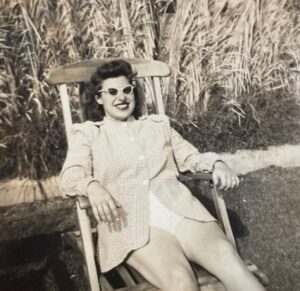
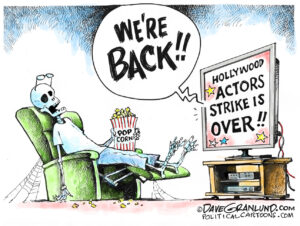

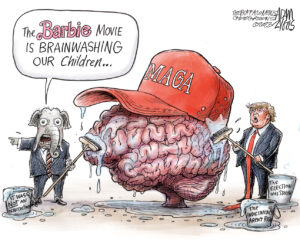

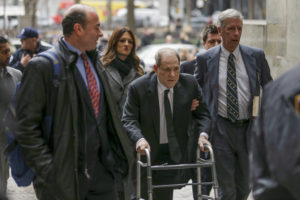
You need to be a supporter to comment.
There are currently no responses to this article.
Be the first to respond.